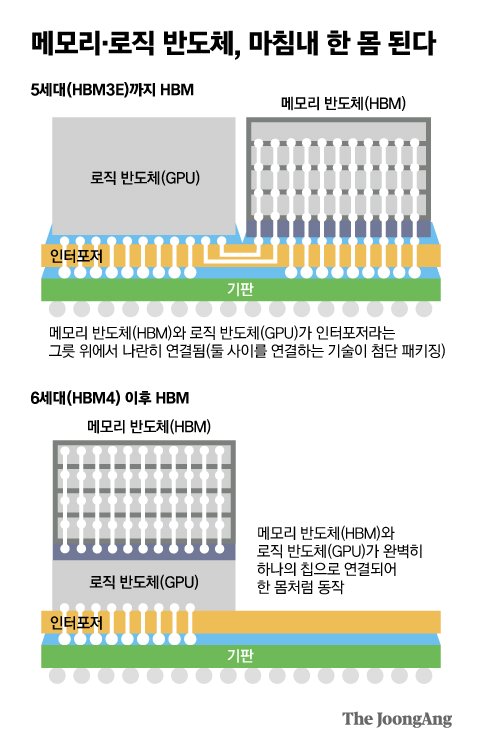SK Hynix is reportedly hiring design staff for logic devices, such as CPUs and GPUs, to develop a stacking method to put HBM4 directly on top of them. This would revolutionize the foundry sector by changing how logic and memory components are coupled and manufactured. As per the same report, Nvidia seems interested in this approach and is working with SK Hynix on its development.
According to The JoongAng (via Tom's Hardware), the company hopes to eliminate the need for interposers by placing HBM4 stacks directly on CPUs, similar to AMD's direct-to-CPU 3D V-Cache implementation. While HBM will be more expensive than cache, it will have a larger capacity, making it a more cost-effective solution.

Image credit: Joongang.co.kr
HBM stacks combine a hub-like logic layer with several memory devices connected to CPUs or GPUs via a 1024-bit interface. However, SK Hynix's strategy of mounting HBM4 stacks directly on CPUs will reduce costs and simplify chip designs. The company is said to be in talks with fabless businesses, including Nvidia, about their HBM4 integrated design technique. The two companies are expected to collaborate to build the chip from the ground up and have it produced by TSMC, which will also use wafer bonding to attach SK Hynix's HBM4 device to logic chips.
However, there is one issue that needs to be addressed: thermals. GPUs like Nvidia's H100 have high power consumption and heat dissipation, and HBM memory is also known for being more power-hungry than other memory solutions. More complex cooling techniques, such as liquid cooling or submersion, may be needed to cool down a package containing logic and memory.
According to Professor Kim Jung-ho of KAIST's Department of Electrical and Electronics, HBM and GPU can function as one unit without an interposer, but only if the heating problem is solved, which should happen in two to three generations. The direct integration of memory into CPUs will also alter the architecture and manufacturing process of chips and could impact prices too.
Discuss on our Facebook page, HERE.
KitGuru says: Processor architectures have always separated memory and logic semiconductors. However, if SK Hynix can find a viable way to mass-produce chips with 3D-stack HBM, the rules may be about to change relatively soon.
 KitGuru KitGuru.net – Tech News | Hardware News | Hardware Reviews | IOS | Mobile | Gaming | Graphics Cards
KitGuru KitGuru.net – Tech News | Hardware News | Hardware Reviews | IOS | Mobile | Gaming | Graphics Cards


